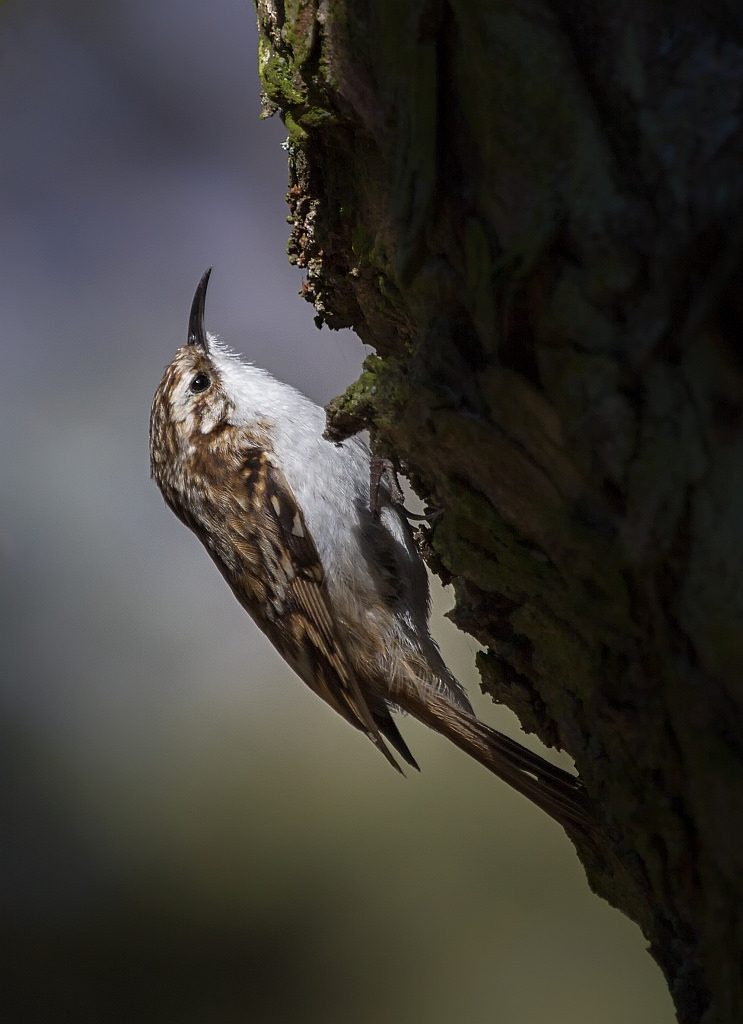Clever little treecreepers
Today I have the nice job of manning the peregrine watch site. Hopefully by the time you read this our peregrines will have laid multiple eggs, as I type this we have one (today is mothering Sunday). The female has been sitting for most of the day in the sunshine, much like I’m doing right now!

One really interesting thing that I keep seeing is a pair of treecreepers just in front of the scopes, climbing up and down a very nice old oak tree. Treecreepers like to nest underneath bark so seeing them on this tree throughout the day makes me think that they are scouting it out as a potential nest site.
They are very well camouflaged with a mottled brown back, looking much like the bark it spends most of it’s time creeping up and down. Its beak can be best described as ‘tooth-pick like’; helping it prise small insects from their hidey holes. It has very strong tails feathers which it uses to anchor itself against the tree. If you can imagine – its two feet and tail act as a tripod as it moves over the bark.
These birds rarely come to bird feeders, your best bet for attracting them to your garden is to rub suet and crushed nuts into the bark of any trees you might have. Because they are so small, they are quite susceptible to the cold. They will often use their beaks and feet to hollow out a little crevice on trees to stay in. They will flatten their bodies against the tree to insulate themselves. Cleverly, they will make crevices on each side of the tree so if the prevailing wind hits one side of the tree they can move around to the sheltered side.
Laura Preston – Scottish Wildlife Trust, Falls of Clyde Ranger
Help protect Scotland’s wildlife
Our work to save Scotland’s wildlife is made possible thanks to the generosity of our members and supporters.
Join today from just £3 a month to help protect the species you love.
Preface
Today I have the nice job of manning the peregrine watch site. Hopefully by the time you read this our peregrines will have laid multiple eggs, as I type this …
